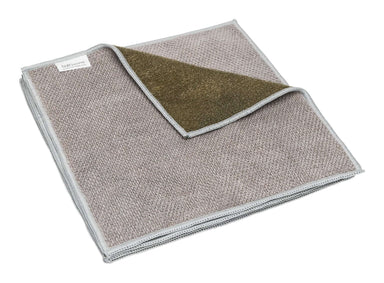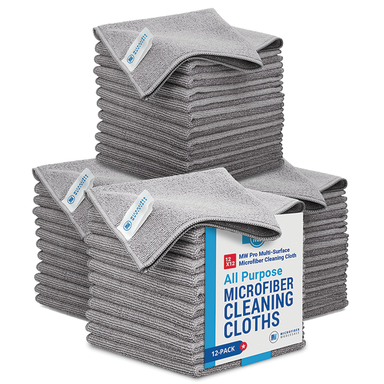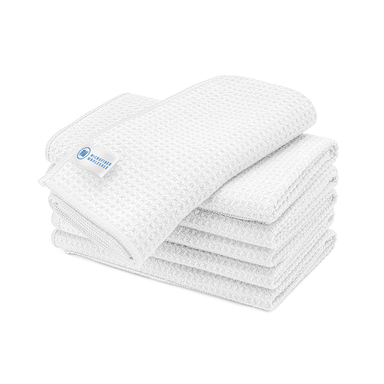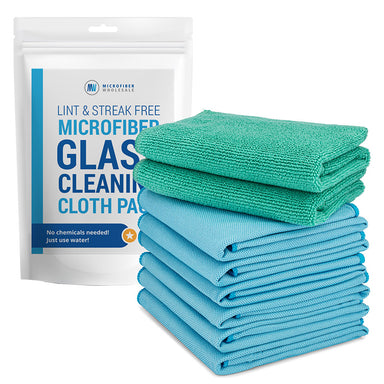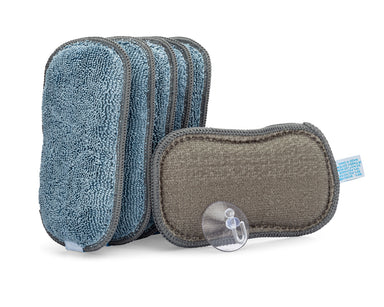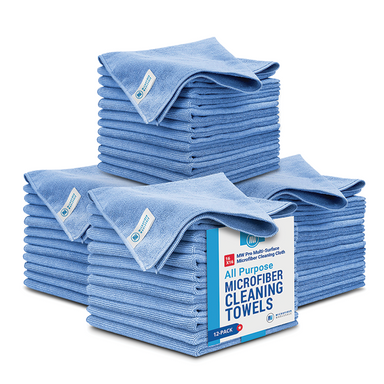Safety First: The Importance of PPE and Color-Coding Microfiber to Preventing Cross-Contamination
The potential for cross-contamination in the kitchen is a risk that cannot be overstated. As healthcare cleaning expert Darrel Hicks explains, “A cleaner has the power to prevent more illness than a doctor can ever cure!”
When discussing germs, people’s minds immediately turn to bathrooms, but if illness were a crime, the bathroom is merely where bullets are loaded, and it’s in the kitchen where the shots are fired. The transfer of germs from the bathroom to uncooked food in the kitchen can result in harmful diseases such as E. coli and salmonella.
Most people presume food-borne illnesses are due to the poor hand hygiene of the cook, forgetting how much cooks and their ingredients touch the surfaces of the kitchen after hand washing. If your client or family washes their hands and then places them on a kitchen counter you accidentally wiped with a bathroom towel or a sponge from your last customer's home, their diligence can be immediately undone. If an errant cherry tomato destined for a salad rolls over the same E. coli-smeared counter, the cook will be held accountable even though the cleaner is to blame.
The keys to combating this risk are color-coded microfiber tools and personal protective equipment (PPE). Having a designated color for each area — such as red for the bathroom and blue for the kitchen — creates a strong visual queue reminding the cleaner not to transfer germs from one space to the next.
Personal protective equipment reduces the germ load on your hands, decreasing the likelihood of transferring germs from one room or property to the next. If you are a professional cleaner, you will need an additional step to ensure you have a separate, freshly laundered set of cleaning supplies for each clean to keep one customer's cold from becoming everyone's problem.
Beyond combating germs, disposable gloves, dishwashing gloves, and sometimes even goggles and dust masks are critical in kitchens due to the nature of the cleaning products used. Oven cleaners, heavy degreasers, descalers, and hard water removers are all some of the most dangerous chemicals in a cleaner's arsenal, especially depending on which company makes them.
While there have thankfully been a number of safer and more environmentally friendly products introduced over the past 20 years, they don’t always work against the toughest situations, so cleaners may still find themselves having to purchase very aggressive formulas.
Even if you dodge these dangerous products, getting in the habit of cleaning with gloves on is important for everyone, as frequent exposure to soaps is drying and irritating to the skin, sometimes causing cracks and sores that increase the cleaner's risk of infection. Simply put, color-coding your microfiber and wearing your PPE keeps both you and the people you are cleaning for healthy.
Since staying healthy is the whole point of cleaning in the first place, if you have been slacking on this step, consider this your wake-up call!











